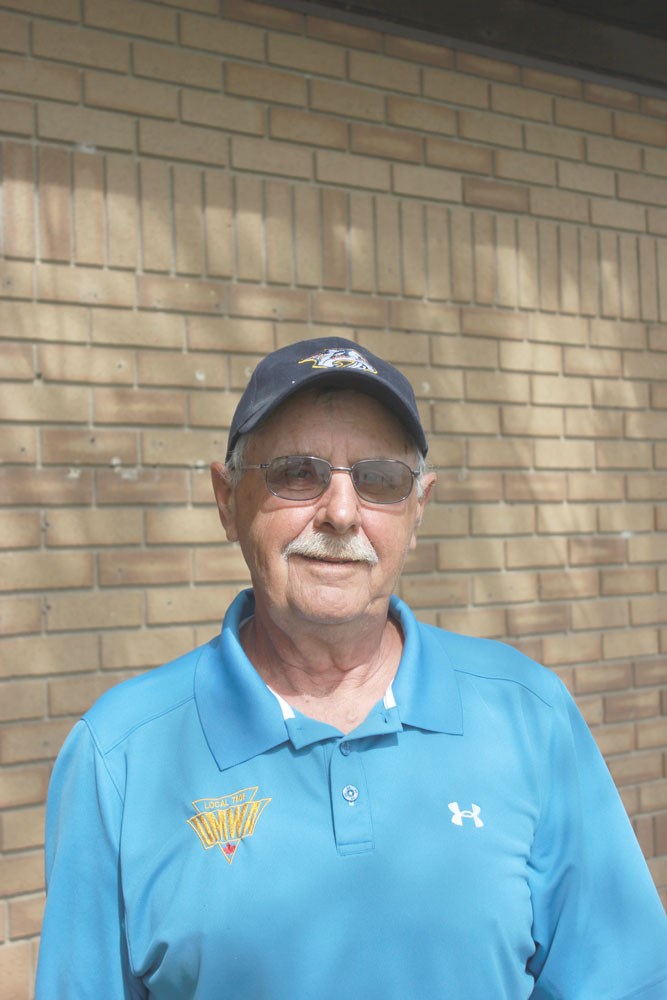Terry Rohatyn started working for the Manitoba and Saskatchewan Coal Company Ltd. in the summer of 1970, thinking that it would be a three-week temporary job.
But it turned into a 46-year career that proved to be a very rewarding experience.
Rohatyn’s career started when he and five other people accepted short-term employment, tearing out some railroad tracks near Bienfait.
“When we finished that, they needed three people for full-time work, so I said I’ll stay,” said Rohatyn. “So it’s been a long summer.”
Once he was finished tearing apart railroad tracks, Rohatyn started working behind an old tipple, loading railcars with coal. Those rail cars would be taken to Bienfait and the coal would be shipped away.
“I did that for a few years, and then I drove a hauler, hauling coal,” said Rohatyn. “I ran a buggy and front-end loaders.”
In 1979, he went to work for the local United Mine Workers of America chapter, and spent the next two years out of their Bienfait office.
When he returned, he ran the Caterpillar equipment for a year and then went to the char loading area.
“After that, I went and ran the locomotive,” said Rohatyn. “I was a brakeman first and then I got to operate the locomotive.”
He finally settled down in the early 1990s, when he became a water pumper, a job he held until he retired earlier this year.
Rohatyn noted he worked for a lot of different companies who owned the local mines. It started with the Manitoba and Saskatchewan Coal Company, and then he worked for Luscar Coal, Prairie Mines and Royalty, Sherritt Coal and finally the Westmoreland Coal Company, who purchased the local operations in late 2013.
Even after he joined the mines full-time following that initial three-week short-term employment, he never imagined he would last so long in the mining industry. He was laid off for two weeks at one time, which was the longest stretch he went without work during his mining career, but he noted other people were let go for longer stretches.
“I was fortunate that I had enough seniority that I never did get laid off (for a long time),” said Rohatyn.
When he started with Manitoba and Saskatchewan Coal Company, it was a small operation with about 20 employees, and the Bienfait mine was the only one in operation.
“In 1972, they started building the new dragline out at Boundary Dam, and that’s when a lot more got hired, because they opened up a shop over at Boundary Dam to haul coal,” said Rohatyn. “Before it was just the utility that hauled coal there. And then we got contracted to haul coal to Boundary.”
Mining was a good job, he said, and he was paid well. When he started, he was making $2.92 per hour, which would obviously be dwarfed by current wages, but it was still significantly more than the minimum wage of the day of $1.10 per hour.
“I was going to school and working part-time at Garth’s Texaco (service station), and I was getting $1.25 an hour,” said Rohatyn. “When they said I’m going to make $2.92 an hour, I thought ‘Wow!’”
He was still living at home at the time, so the hourly wage he received was more than enough for him to make ends meet.
The people he worked with were also great.
“My dad worked out there,” said Rohatyn. “Back then, I had a couple of other friends who worked there with me, who started at the same time or a year later. And generally I worked with really good people the whole time I was there.”
Rohatyn was also passionate about the union. He was on the executive for the UMWA local for 32 of his 46 years at the mines. It could be stressful serving on the executive, particularly during negotiations.
“I enjoyed that very much, negotiating contracts and helping … the people get their fair share, what they deserve,” said Rohatyn.
Technology also changed a lot during his career. When he first started, the mines used 25- to 30-tonne haulers. Now they’re 150 and 200-tonne vehicles. The machinery is much bigger.
“Back when I started, there was no such thing as an air conditioner or a radio in our truck, or anything like that,” said Rohatyn.
When he started, if he opened the door in the hauler, dust would infiltrate the vehicle. He had to wear a dust mask because it was so dusty in the vehicles.
“When we were driving up a ramp, we were going so slow the dust would just swirl around,” said Rohatyn.
The air conditioners and radios were gained through negotiations, and air conditioning has made mining vehicles much more comfortable.
Rohatyn believed now was the right time to retire. He’s more than 65 years old, he spent more than 65 years working for the mines, and he doesn’t regret the decision.
He misses the people he worked with, but he is happily spending more time fishing and golfing, and he is looking forward to taking a couple of holidays during the winter that wouldn’t have been possible previously.
“When we’re going somewhere, I don’t need to look and see when I need holidays booked, or have banked days,” said Rohatyn.




